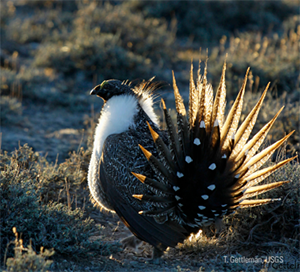The Desert Renewable Energy Conservation Plan (DRECP), a major component of California's renewable energy planning efforts, will help provide effective protection and conservation of desert ecosystems while allowing for the appropriate development of renewable energy projects.
The DRECP is focused on 22.5 million acres in the desert regions and adjacent lands of seven California counties – Imperial, Inyo, Kern, Los Angeles, Riverside, San Bernardino, and San Diego. It is an innovative landscape-level plan that streamlines renewable energy development while conserving unique and valuable desert ecosystems and providing outdoor recreation opportunities.
The DRECP is a collaborative effort between the California Energy Commission, California Department of Fish and Wildlife, the U.S. Bureau of Land Management, and the U.S. Fish and Wildlife Service, also known as the Renewable Energy Action Team.
The BLM signed the Record of Decision approving its Land Use Plan Amendment on September 14, 2016, completing Phase I of the DRECP. The BLM Plan Amendment covers the 10 million acres of BLM-managed lands in the DRECP plan area and supports the overall renewable energy and conservation goals of the DRECP.
Phase II of the DRECP focuses on better aligning local, state, and federal renewable energy development and conservation plans, policies, and goals. It includes building off of the Renewable Energy Conservation Planning Grants (RECPG) that were awarded by the California Energy Commission to counties in the plan area.
For more information:
https://www.drecp.org/
